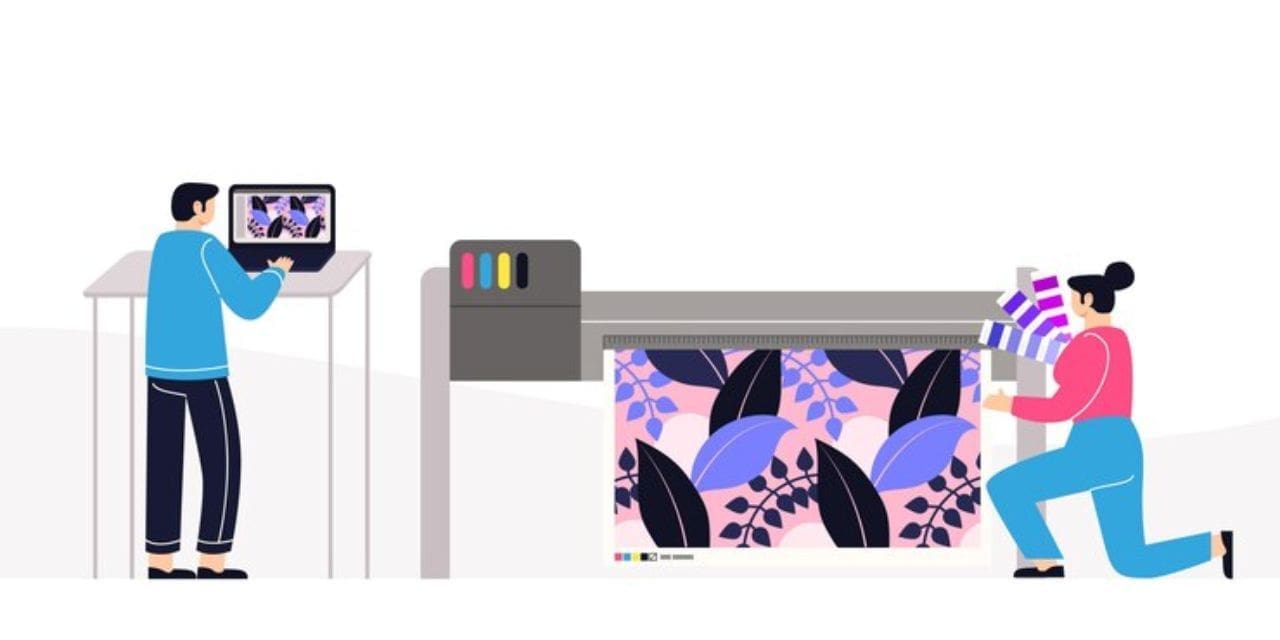Custom banner fabric printing has transformed the landscape of advertising and marketing for businesses across the globe. Banners have emerged as versatile and effective tools for conveying messages, promoting brands, and attracting customers.
Whether it’s for trade shows, events, storefront displays, or outdoor advertising, fabric banners offer unparalleled flexibility, durability, and visual appeal. Banners can come in different shapes and sizes and different personalization levels. Using cutting-edge banner design software businesses can streamline the banner design and ordering process, empowering customers to create customized banners tailored to their specific needs.
In this comprehensive blog, we will see into the various techniques, advantages, and emerging trends in custom banner fabric printing, specifically addressing business owners providing services in this domain.
When designing custom banners for events or sports games, incorporating bold and vibrant elements, like those seen in Printmoz cheer signs, can enhance visibility and engagement.
Techniques of Custom Banner Fabric Printing
1. Digital Printing:
Digital printing, another form of direct printing, utilizes inkjet technology to apply ink directly onto the fabric surface.
It offers high flexibility and customization options, allowing for on-demand printing of custom designs with minimal setup time.
Digital printing excels in reproducing fine details, gradients, and complex color schemes, making it suitable for a wide range of applications, from small banners to large-format displays.
With digital printing, businesses can achieve fast turnaround times and cost-effective solutions for both short and long print runs.
2. Dye Sublimation Printing:
Dye sublimation printing is a sophisticated technique that involves transferring dye onto fabric using heat.
The process begins with printing the desired design onto transfer paper using specialized dye-sublimation inks. The printed paper is then placed on top of the fabric, and heat and pressure are applied, causing the ink to vaporize and permeate the fibers of the fabric.
The result is vibrant, high-resolution prints with excellent color reproduction and durability. Dye sublimation printing is particularly well-suited for fabric banners intended for outdoor use, as the prints are resistant to fading and weather damage.
3. Direct-to-Fabric Printing:
Direct-to-fabric printing, also known as dye-sublimation direct printing or digital textile printing, involves applying ink directly onto the fabric using advanced digital printers.
Unlike traditional printing methods that rely on intermediary substrates such as transfer paper, direct-to-fabric printing eliminates the need for transfer, resulting in superior color accuracy and detail.
This method is ideal for producing custom fabric banners with intricate designs, gradients, and photographic imagery. Direct-to-fabric printing offers fast turnaround times and is well-suited for small to medium-sized production runs.
4. Screen Printing:
Screen printing, although a traditional method, remains a popular choice for custom banner fabric printing, especially for large-scale production runs.
The process involves creating a stencil (or screen) of the desired design on a fine mesh screen. Ink is then applied to the screen and forced through the mesh onto the fabric using a squeegee, creating the desired image.
Screen printing is known for its versatility, allowing for printing on a wide range of fabrics, including cotton, polyester, and blends. While it may not offer the same level of detail as digital printing methods, screen printing excels in producing bold, opaque colors and is cost-effective for bulk orders.
Advantages of Fabric Banners
Fabric banners offer several advantages over other banner materials, here are some of the key benefits:
- Durability: Fabric banners are tough and resilient, resisting tears, creases, and fading, ensuring longevity even in outdoor environments.
- Versatility: Their flexible nature allows for easy storage, transportation, and a variety of mounting options, making them adaptable to different display settings.
- Eco-Friendly: Made from sustainable materials like organic cotton or recycled polyester, fabric banners are environmentally friendly and can be reused or recycled, reducing waste.
- Enhanced Aesthetics: With a soft texture and vibrant colors, fabric banners offer a sophisticated and eye-catching appeal that stands out in both indoor and outdoor settings.
- Lightweight: Fabric banners are lightweight, making them easy to handle and install, saving time and effort during setup and takedown.
- Washable: Many fabric banners are machine washable, allowing for easy cleaning and maintenance, prolonging their lifespan and keeping them looking fresh.
- Customization: Fabric banners, when combined with web to print software, offer endless customization options, from various sizes and shapes to printing techniques, allowing businesses to create unique and memorable displays tailored to their brand and message.
Emerging Trends in Custom Banner Fabric Printing
The custom banner printing industry is constantly evolving, offering exciting new possibilities for businesses like yours. Here’s a breakdown of key trends:
- Personalization: Businesses are leveraging custom banner fabric printing, along with banner designing software, to create personalized banners tailored to their target audience.
- Sustainable Materials: There’s a rising demand for fabric banners made from eco-friendly materials like organic cotton and recycled polyester, reflecting a commitment to environmental responsibility and appealing to eco-conscious consumers.
- Interactive Elements: Incorporating QR codes, NFC tags, and augmented reality (AR) into fabric banners adds an interactive dimension to marketing campaigns, driving customer engagement and conversions.
- Smart Textiles: Advancements in textile technology have led to the development of smart textiles embedded with electronic components like sensors and LEDs. Smart fabric banners offer dynamic and interactive experiences, captivating audiences and leaving a lasting impression.
Conclusion
The custom fabric banner market is booming! Customers crave unique visuals like foil stamping and eco-friendly options like recycled materials. Digitalization brings faster turnarounds, online design tools, and interactive features like QR codes. Embrace these trends to offer clients innovative, sustainable, and interactive solutions, ensuring your business stands out and thrives in the future of advertising.

